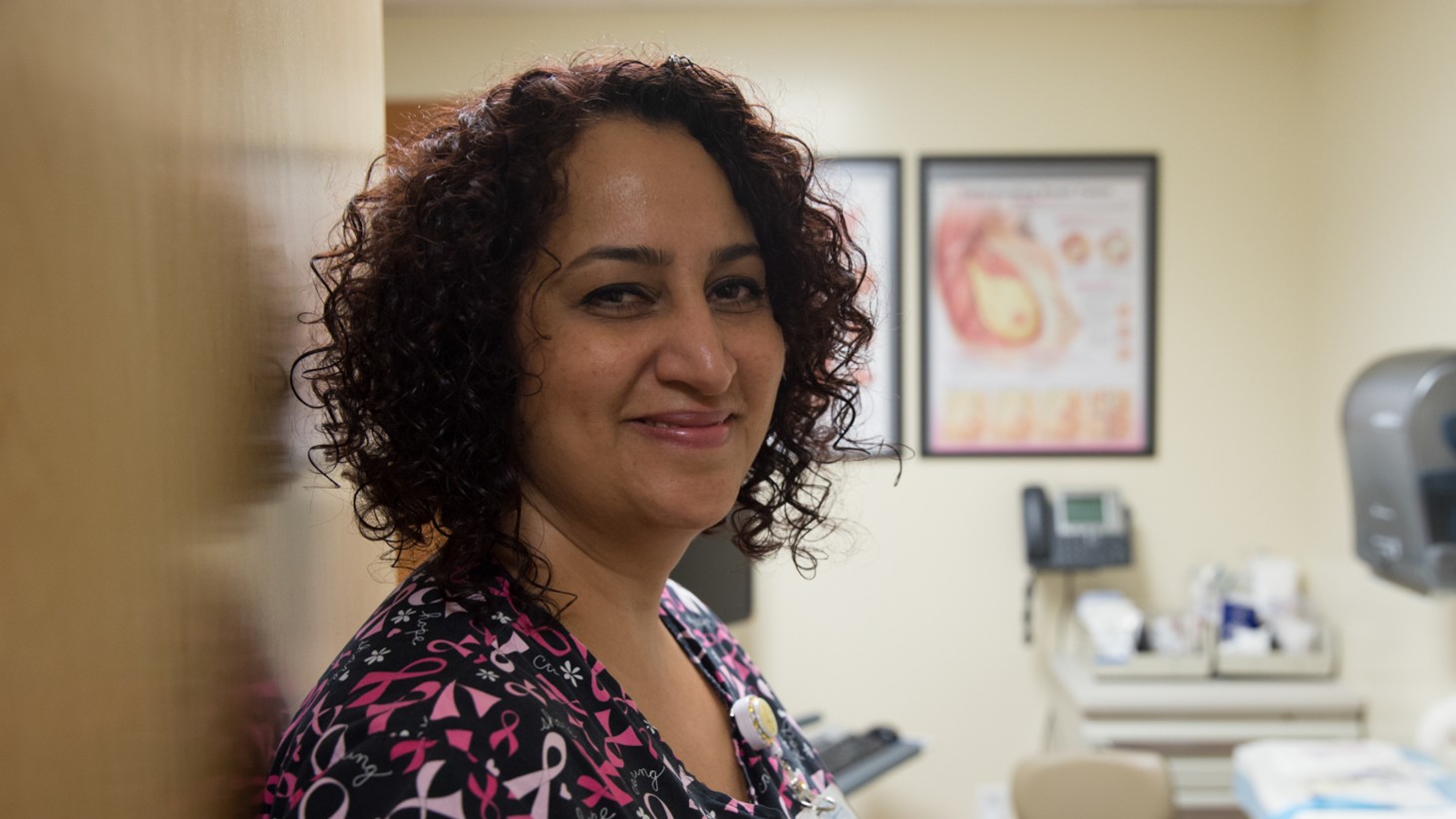Hank Spring 2014
Peer Advice: One Lesson at a Time

Marcella Austin, an LVN and member of United Steelworkers Local 7600, is the union co-lead of the Surgical Services UBT at Ontario Medical Center.
Working up from Medical Assistant to LVN
Marcella Austin spent her first six years at Kaiser Permanente as a medical assistant. Three years ago, she became a licensed vocational nurse through a partnership between KP, the Ben Hudnall Memorial Trust, Chaffey College and the San Bernardino County Workforce Investment Board that funded a Pathway to LVN project. That gave her the support she needed to advance her career—tuition, books, tutoring and wages. She was one of the first of nearly 50 KP employees to graduate. She was interviewed by LMP Senior Communications Consultant Anjetta McQueen.
Q. What started you on your journey?
A. My father, who is diabetic, had a heart attack when I was in college. My mom and I were the first ones at the ER with him. It was scary, but I remember those nurses and how they took care of him and us. One of the nurses took an orange from her lunch and taught me how to do an insulin injection. I fell in love with nursing. Six months later, I became a medical assistant. I thought that was as close as I would get.
Q. How did you manage school after years of working?
A. I went to school full time and worked in Urgent Care from 5 to 9, getting my 20 hours a week. The Ben Hudnall trust covered the other 20 hours. I never lost a paycheck. It’s not like I could say I didn’t have the funds—the funds were there.
Q. What about the responsibilities at home?
A. I have two kids, a 16-year-old daughter and a son who is 13. I had a husband, mother and mother-in-law all helping me out. I used to be the one who cooked, cleaned and picked up after everyone. All of this helped my kids become more responsible.
Q. College nursing slots are hard to come by. How did Chaffey College help?
A. I have taken one course or another since graduation from high school. I also took time to get married, have children. Chaffey pulled all of my transcripts from everywhere and offered the prerequisite classes I still needed.
Q. Your wages and tuition were covered, but how did you manage all those other costs?
A. We owe a lot of thanks to the county’s Workforce Investment Board. They saw a need for educating people in the community. We didn’t have to worry about transportation, uniforms or supplies during our clinicals. All of that can really add up.
Q. How did the cooperation of your labor management partners help you?
A. Managers and labor leads stayed with us every step of the way. They had meetings with us. They kept asking us how they could help. If there was a barrier, if a schedule needed changing, they would work together to see that it got done. I especially appreciate the help from Susan Rainey, the department administrator for staffing at Ontario; career counselor Michele DeRosa with the Hudnall trust; Margaret Winningham, a senior Human Resources consultant for Fontana/Ontario; and Valerie Robinson, a Local 7600 representative.
Q. What is different about your work now?
A. In the LVN training, you get the basics—biology, anatomy, psychology—but you also learn about nursing care plans, sterile processing, wound care and get hands-on training all while attending school. I can assist RNs in several procedures, do minor surgical assists, order and co-sign documents in KP HealthConnect®.
Q. What is different about you?
A. My confidence has gone through the roof. I was selected to go to the KP Quality Conference, and I was invited to speak in a leadership meeting about my experience. The girls on the unit tease me now, saying they want my autograph.
